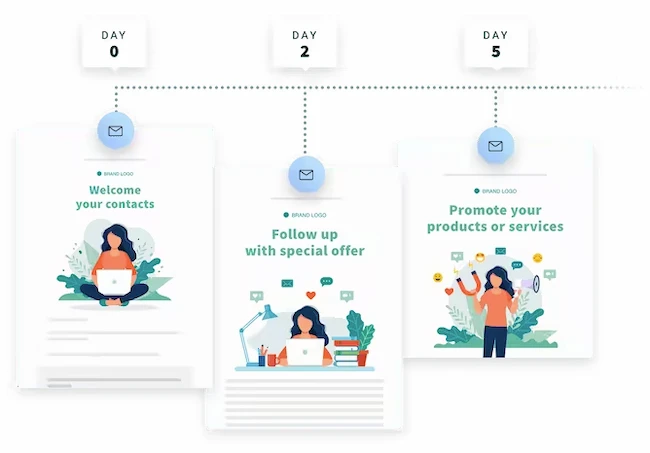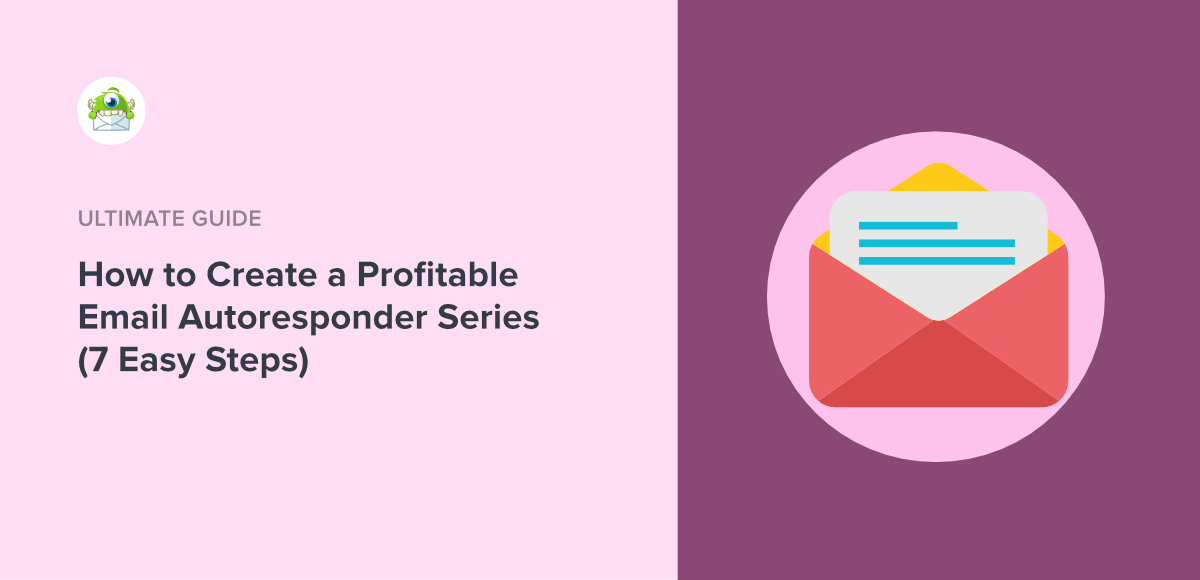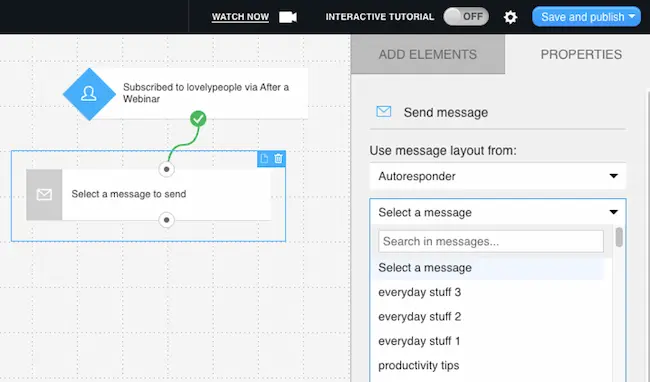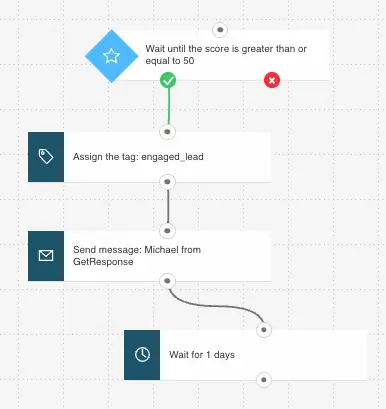Ever thought about how much easier life would be if you could automate marketing? Just imagine, sitting back while your marketing initiatives resolve themselves. Lucky for you, we’re going to delve into mastering marketing using an autoresponder – and there’s a whole lot more to learn in this article.
Autoresponders can be game-changers when it comes to keeping in touch with your customers and maintaining the rhythm of your marketing campaigns. All those repetitive tasks you have been doing manually? They’ll be a thing of the past! Not to mention, they can help you to build solid, consistent relationships with your audience.
Besides directly sending emails to your customers, autoresponders can perform other powerful tasks like tracking how customers interact with those emails. They can identify which customers have responded to certain marketing initiatives and those who haven’t. It’s like having your own marketing assistant – only stoically efficient!
In conclusion, implementing an autoresponder can be intimidating, but it’s doable, and the benefits are too huge too ignore. It saves time, improves efficiency, monitors progress, and maintains consistency. So, ready to dip your toes and take your marketing game to the next level? Keep on reading!

This image is property of us-wd.gr-cdn.com.
Understanding the Concept of Autoresponder
What is an Autoresponder
Imagine an assistant working round-the-clock without taking a single break, continuously managing your email marketing efforts, sending timely responses, categorizing your audience, and analyzing the engagement metrics. This empowered assistant is what an Autoresponder is. It’s an automated email system that triggers pre-written emails based on a specific schedule or customer actions.
How an Autoresponder Works
In simple terms, an autoresponder works by triggering responses based on user behavior or pre-set schedules. When a customer subscribes to your newsletter, makes a purchase, or clicks on a specific part of your website, the autoresponder jumps into action and delivers a crafted email tailored to encourage engagement or drive conversion.
Key Functions of an Autoresponder
Automating Email Campaigns
An autoresponder takes over the tedious job of email marketing. It ensures consistent communication with your clients by automatically sending out time or action-triggered emails that help sustain interest in your brand.
Scheduling Messages
Through scheduling emails, an autoresponder ensures your messages get sent when they’ll have the best impact. You can set your email series to be dispatched on specified dates or triggered by specific actions, e.g., a welcoming email immediately after customer sign-ups.
Metrics and Reporting Functions
Autoresponders, besides sending emails, provide useful analytics. They track open rates, click-through rates, handle bounce rates, and even analyze the best time to send emails. These metrics assist you in realizing the effectiveness of your campaigns.
Segmentation and Targeting Features
With an autoresponder, you can segment your audience based on demographics, user behavior, or any other custom field. These personalization efforts result in more targeted communications, enhancing campaign results.
Implementing Autoresponder in Marketing
Integration with Marketing Software
To get the most out of your autoresponder, integrate it with your other marketing software. This allows you to have a unified strategy that ensures seamless communication with your customers.
Setting Up a Marketing Workflow
Setting up emails might seem straightforward, but crafting a user journey that entices action requires careful thought. A typical workflow usually starts with a welcome email, followed by nurturing emails and culminating in a conversion or sales email.
Trigger-Based Emails
Trigger-based emails are sent by autoresponders in response to specific user behaviors. These could range from welcoming a new user, following up a purchase, celebrating birthdays, or even re-engaging inactive users.
Building Engagement with Autoresponder
Crafting Responsive Emails
Engagement begins with having emails that your audience can open on multiple devices. Your autoresponder should be able to dispatch mobile-friendly and responsive emails.
Creating Email Series for Lead Nurturing
Strategically creating an email series helps in guiding your leads down the sales funnel. Your autoresponder could start with informative content to build trust, then move to product comparisons and close with discount or trial offers.
Utilizing Content Rich Emails
Content remains king even in email marketing. Your emails must deliver value to your subscribers, whether in the form of information, entertainment, or exclusive deals.

This image is property of cdn.optinmonster.com.
Enhancing Click-Through Rates with Autoresponders
Ensuring Mobile-Friendly Emails
More than half of email opens happen on mobile. Therefore, your autoresponder should dispatch emails optimized for viewing on smaller screens with big, easily clickable action buttons.
Testing Email Elements
Autoresponders offer A/B testing that allows you to experiment with different email components like subject lines, headlines, layouts, and call-to-action buttons to identify what resonates the most with your audience.
Analyzing Click-Through Rates
Autoresponders provide CTR analytics that are essential in showing which emails are performing well. Use this information to optimize your messages, improve your segmentation, or revise your call to actions.
Leveraging Autoresponders for Customer Retention
Personalizing Email Campaigns
Most autoresponders allow for personalization which is key in forging a connection with your audience. From addressing the recipient by name to tailoring content to their interests, personalization can significantly bolster customer retention.
Implementing Feedback Mechanisms
Inviting feedback not only makes your customers feel valued, but it also provides you with crucial insights to improve your products or services. Feedback forms can easily be attached to autoresponder emails.
Retargeting Strategies
Your autoresponder can help you keep your brand on top of the mind of your customers by offering exclusive deals to inactive subscribers or deploying cart recovery emails.

This image is property of us-wd.gr-cdn.com.
Avoiding Common Autoresponder Mistakes
Avoiding Spam Triggers
Your emails mean nothing if they end up in the spam folder. Avoid spam-triggering words, use a verified email address, and always include an unsubscribe link.
Ensuring Email Deliverability
Monitor your deliverability rate using your autoresponder’s reporting functions. Low rates may signal issues such as faulty addresses or poor sender reputation.
Time-Zone Considerations
Remember your subscribers may be spread across different time zones. Schedule your emails to land in the inbox at optimized, recipient-relevant times.
Frequency of Emails
Email frequency can be a thin line. Too many emails may annoy your subscribers; too few may make them forget you. Find the right balance using your autoresponder’s analytics.
Growth Opportunities Using Autoresponders
Upselling and Cross-Selling
Leverage your autoresponder to recommend related products, offer upgrades, or other additional services that your customers might be interested in.
Building Stronger Relationships
Regular, meaningful communication through your autoresponder fosters stronger relationships with your audience, inspiring loyalty and enhancing customer lifetime value.
Automating Referral Programs
Your autoresponder can streamline referral programs by automatically sending out referral emails or rewards, turning your customers into your promoters.

This image is property of us-wd.gr-cdn.com.
The Future of Autoresponders and AI in Marketing
Natural Language Processing in Emails
By integrating with AI, autoresponders can generate more human-like communications, improving communication quality and engagement.
Predictive Analysis and Autoresponders
AI can analyze consumer behavior and engagement trends to predict the best times to send emails or suggest which user segments to target.
AI-Powered Personalization
AI can magnify autoresponder personalization power by analyzing data and providing hyper-targeted emails, significantly improving engagement and conversion rates.
Conclusion
Summarizing the Importance of Autoresponder in Marketing
Mastering an autoresponder can significantly enhance your email marketing effectiveness, freeing up your time, while improving customer engagement and driving conversions.
Next Steps in Mastering Autoresponder Marketing
To truly master your autoresponder, keep analyzing your campaign results, fine-tuning your approaches, staying updated with the latest capabilities, and integrating your autoresponder with your overall marketing strategy. Remember, the goal isn’t only to automate but also to humanize your communications. Happy emailing!
